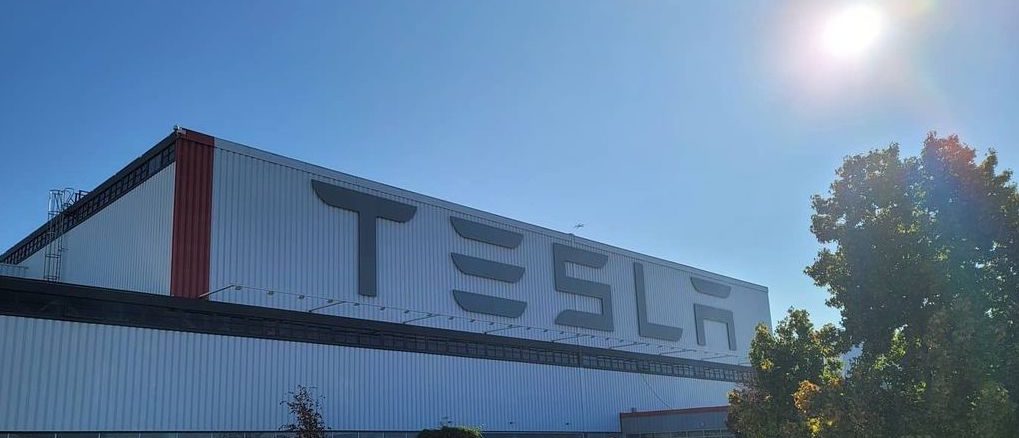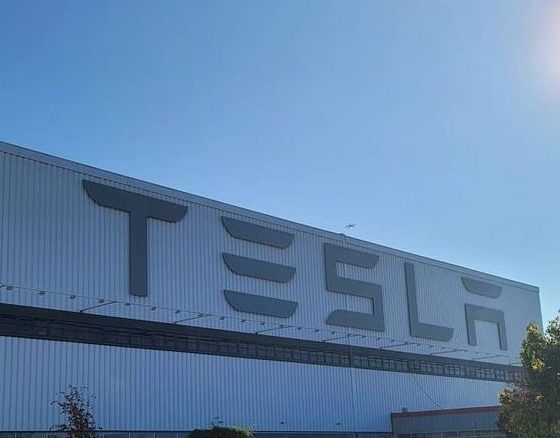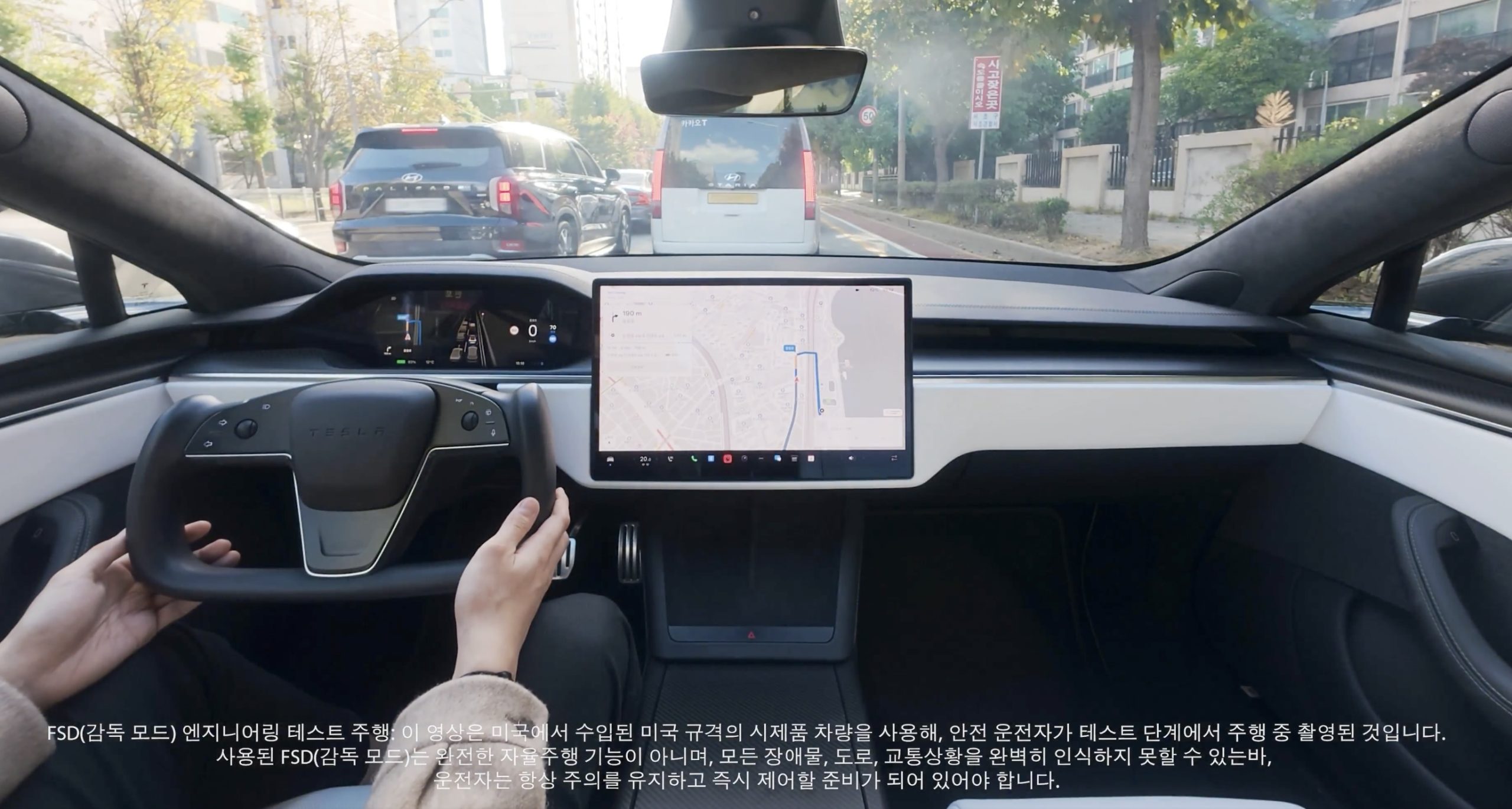

News
Tesla FSD’s prolonged release doesn’t make it a ‘fraud,’ company says
Tesla Full Self-Driving’s prolonged release doesn’t make it a “fraud,” the company said in a motion to dismiss a case.
Tesla is currently involved in a class-action lawsuit from a few Autopilot and Full Self-Driving customers and has recently filed a motion to dismiss the case with the U.S. District Court in San Francisco. In that motion, a statement was made by Tesla’s attorneys that may have been taken out of context by some media reports.
Teslarati obtained a copy of the motion, and here is what we found.
After some background information on FSD, Tesla noted that each of the plaintiffs purchased a vehicle, and “all but one allegedly purchase the FSDC package.” (FSDC is an acronym for full self-driving capability.)
“Plaintiffs knew at the time of purchase that their cars were not completely autonomous. And they knew that the timeline towards more complete autonomy was contingent upon numerous factors, including software development and regulatory approval. Yet now they sue Tesla, complaining that their cars are not completely autonomous.”
The document noted that four out of five of the named plaintiffs have valid arbitration agreements with Tesla that should be enforced and cover all of their claims. The one plaintiff who opted out “advanced a consolidated complaint riddled with defects, and that should be dismissed.”
The plaintiff “sued too late–five years after he purchased his vehicle and the optional software package, well after any of his claims accrued. All of his claims are time-barred and should be dismissed. Moreover, the hundreds-of-paragraph, narrative complaint fails to support a single cognizable legal theory. The Complaint makes no mention of the parties’ written contract or Tesla’s car warranty. It instead cherry-picks numerous statements allegedly made by Tesla and attempts to manufacture claims for fraud and breach of warranty.”
Tesla’s attorneys made several statements, including that headline-worthy one regarding FSD and failure. However, the attorneys never claimed that FSD is a failure. In the document, the attorneys pointed out that the complaint “identifies no statement that Tesla made that was fraudulent.”
Additionally, it added that no there was no statement made that Tesla’s vehicles, including those equipped with the FSDC package, were fully autonomous at the time of the Plaintiff’s purchase. Tesla’s website also made it very clear that those vehicles were not.
Tesla’s attorneys noted that the plaintiff allegedly researched Tesla’s online and public statements and reviewed them before buying his vehicles. The labels of “Autopilot,” “Enhanced Autopilot,” or “Full Self-Driving Capability” didn’t mean that the vehicles were fully autonomous. Tesla’s attorneys also noted that Tesla’s user manuals plainly showed this as well.
“Nor would any reasonable consumer purchase a Tesla vehicle with the belief that it is fully autonomous based solely on these labels,” the attorneys said.
Instead, each of the plaintiffs alleged that they “decided to purchase [his or her] vehicle and the ADAS packages after researching, reviewing, and relying on Tesla’s online and other public statements.”
The plaintiff’s “assertion that Tesla promised the vehicles were already fully autonomous when they were sold rings hollow,” the attorneys stated.
“His assertion that Tesla promised to release completely autonomous capabilities ‘within a reasonable time after,’ his purchase fares no better.”
“No allegations show that Tesla promised that the FSDC package would enable full autonomy within a specified period of time. Many of the statements quoted in the Complaint did not even concern the FSDC package,” the attorneys said, adding that this makes it irrelevant to the plaintiff’s claims.
“In addition, the quoted statements were also often accompanied by and subject to the qualifier that a release of fully autonomous capabilities to the general public would require government approval, a variable over which Tesla had no control, and that any regulatory clearance would require a vast amount of data to show that completely autonomous driving is significantly safer than human driving.”
The attorneys cited another federal court that said similar statements “do not constitute fraud” because they indicate that Tesla wasn’t making the absolute representation the Plaintiff said he was.
“Same here. Especially under the heightened Rule 9(b) standard, no allegation suggests that the aspirational statements that Tesla did make were, somehow, false when made. See Richardson, 2000 WL.”
“To the contrary, allegations in the Complaint demonstrate that Tesla has been constantly improving its ADAS technology by releasing software updates, with a goal of achieving more and better autonomy capabilities in the future.”
“Mere failure to realize a long-term, aspirational goal is not fraud.“
In reference to the above statement, the attorneys pointed out that the courts often rejected the argument that a plaintiff can prove the fraudulent intent by pointing to Tesla’s “subsequent failure to perform under the agreement.”
Since launching the software in 2015, Tesla has made a lot of progress toward FSD and autonomous. Tesla has had two AI Day events explaining the technology being developed and used. And Tesla has since launched an FSD Beta testing program, and you can read the recent Tesla FSD Beta news here.
Disclosure: Johnna is a $TSLA shareholder and believes in Tesla’s mission.
Your feedback is welcome. If you have any comments or concerns or see a typo, you can email me at johnna@teslarati.com. You can also reach me on Twitter at @JohnnaCrider1.
Teslarati is now on TikTok. Follow us for interactive news & more. Teslarati is now on TikTok. Follow us for interactive news & more. You can also follow Teslarati on LinkedIn, Twitter, Instagram, and Facebook.

News
Tesla Full Self-Driving lands in a new country, its 7th

Tesla Full Self-Driving has officially landed in a new country today, its seventh overall after it launched in both Australia and New Zealand earlier this year.
On Sunday, Tesla owners in South Korea reported that the company’s Full Self-Driving (Supervised) had started arriving in their vehicles. Owners reported that it was v14.1.4, which is not the latest version available in other countries, but is one of the most recent releases Tesla has deployed to drivers:
From 6 to 7
Tesla Full Self-Driving has launched in South Korea; the 7th country to have FSD https://t.co/X6gm1SyoxV
— TESLARATI (@Teslarati) November 23, 2025
This marks the seventh country in which Tesla has enabled its Full Self-Driving suite, following the United States and Puerto Rico, Canada, China, Mexico, Australia, and New Zealand.
Tesla launched Full Self-Driving most recently in Australia and New Zealand about three months ago. The expansion is a major breakthrough for the company as it aims to launch Full Self-Driving on a global scale.
However, the company’s biggest challenge thus far has been getting European regulatory agencies to handle the red tape that has inhibited Tesla from launching its semi-autonomous driving suite on the continent. Recently, it admitted that it sees a pathway through Dutch regulatory bodies, which seem to be the most willing to work with Tesla to get FSD in Europe.
Tesla Full Self-Driving appears to be heading to Europe soon
The company said that it has driven over 1 million kilometers safely on European roads across 17 different countries in internal testing. But its path to success will be by “partnering with the Dutch approval authority RDW to gain exemption for the feature. This involves proving compliance with existing regulations (UN-R-171 DCAS) + filing an exemption (EU Article 39) for yet-to-be-regulated behaviors like Level 2 systems off-highway, system-initiated lane changes with hands-off the wheel, etc.”
Perhaps the expansion into Europe will be the biggest challenge for Tesla, but it could also yield major results and advantages for the company moving forward. Tesla said it hopes to have FSD available in Europe sometime early next year.
For now, the expansion in South Korea is the latest win for Tesla and its self-driving efforts. In the U.S., it now turns its focus toward fully autonomous operation, as it works with state agencies to launch Robotaxi outside of Texas, California, and most recently, Arizona.
Elon Musk
Tesla CEO Elon Musk teases insane capabilities of next major FSD update

Tesla CEO Elon Musk teased the insane capabilities of the next major Full Self-Driving update just hours after the company rolled out version 14.2 to owners.
Tesla Full Self-Driving v14.2 had some major improvements from the previous iteration of v14.1.x. We were on v14.1.7, the most advanced configuration of the v14.1 family, before Tesla transitioned us and others to v14.2.
However, Musk has said that the improvements coming in the next major update, which will be v14.3, will be where “the last big piece of the puzzle finally lands.”
14.3 is where the last big piece of the puzzle finally lands
— Elon Musk (@elonmusk) November 21, 2025
There were some major improvements with v14.2, most notably, Tesla seemed to narrow in on the triggers that caused issues with hesitation and brake stabbing in v14.1.x.
One of the most discussed issues with the past rollout was that of brake stabbing, where the vehicle would contemplate proceeding with a route as traffic was coming from other directions.
We experienced it most frequently at intersections, especially four-way stop signs.
Elon Musk hints at when Tesla can fix this FSD complaint with v14
In our review of it yesterday, it was evident that this issue had been resolved, at least to the extent that we had no issues with it in a 62-minute drive, which you can watch here.
Some owners also reported a more relaxed driver monitoring system, which is something Tesla said it was working on as it hopes to allow drivers to text during operation in the coming months. We did not test this, as laws in Pennsylvania prohibit the use of phones at any time due to the new Paul Miller’s Law, which took effect earlier this year.
However, the improvements indicate that Tesla is certainly headed toward a much more sentient FSD experience, so much so that Musk’s language seems to be more indicative of a more relaxed experience in terms of overall supervision from the driver, especially with v14.3.
Musk did not release or discuss a definitive timeline for the release of v14.3, especially as v14.2 just rolled out to Early Access Program (EAP) members yesterday. However, v14.1 rolled out to Tesla owners just a few weeks ago in late 2025. There is the potential that v14.3 could be part of the coming Holiday Update, or potentially in a release of its own before the New Year.
News
Tesla Full Self-Driving v14.2 – Full Review, the Good and the Bad

Tesla rolled out Full Self-Driving version 14.2 yesterday to members of the Early Access Program (EAP). Expectations were high, and Tesla surely delivered.
With the rollout of Tesla FSD v14.2, there were major benchmarks for improvement from the v14.1 suite, which spanned across seven improvements. Our final experience with v14.1 was with v14.1.7, and to be honest, things were good, but it felt like there were a handful of regressions from previous iterations.
While there were improvements in brake stabbing and hesitation, we did experience a few small interventions related to navigation and just overall performance. It was nothing major; there were no critical takeovers that required any major publicity, as they were more or less subjective things that I was not particularly comfortable with. Other drivers might have been more relaxed.
With v14.2 hitting our cars yesterday, there were a handful of things we truly noticed in terms of improvement, most notably the lack of brake stabbing and hesitation, a major complaint with v14.1.x.
However, in a 62-minute drive that was fully recorded, there were a lot of positives, and only one true complaint, which was something we haven’t had issues with in the past.
The Good
Lack of Brake Stabbing and Hesitation
Perhaps the most notable and publicized issue with v14.1.x was the presence of brake stabbing and hesitation. Arriving at intersections was particularly nerve-racking on the previous version simply because of this. At four-way stops, the car would not be assertive enough to take its turn, especially when other vehicles at the same intersection would inch forward or start to move.
This was a major problem.
However, there were no instances of this yesterday on our lengthy drive. It was much more assertive when arriving at these types of scenarios, but was also more patient when FSD knew it was not the car’s turn to proceed.
Can report on v14.2 today there were ZERO instances of break stabbing or hesitation at intersections today
It was a significant improvement from v14.1.x
— TESLARATI (@Teslarati) November 21, 2025
This improvement was the most noticeable throughout the drive, along with fixes in overall smoothness.
Speed Profiles Seem to Be More Reasonable
There were a handful of FSD v14 users who felt as if the loss of a Max Speed setting was a negative. However, these complaints will, in our opinion, begin to subside, especially as things have seemed to be refined quite nicely with v14.2.
Freeway driving is where this is especially noticeable. If it’s traveling too slow, just switch to a faster profile. If it’s too fast, switch to a slower profile. However, the speeds seem to be much more defined with each Speed Profile, which is something that I really find to be a huge advantage. Previously, you could tell the difference in speeds, but not in driving styles. At times, Standard felt a lot like Hurry. Now, you can clearly tell the difference between the two.
It seems as if Tesla made a goal that drivers should be able to tell which Speed Profile is active if it was not shown on the screen. With v14.1.x, this was not necessarily something that could be done. With v14.2, if someone tested me on which Speed Profile was being used, I’m fairly certain I could pick each one.
Better Overall Operation
I felt, at times, especially with v14.1.7, there were some jerky movements. Nothing that was super alarming, but there were times when things just felt a little more finicky than others.
v14.2 feels much smoother overall, with really great decision-making, lane changes that feel second nature, and a great speed of travel. It was a very comfortable ride.
The Bad
Parking
It feels as if there was a slight regression in parking quality, as both times v14.2 pulled into parking spots, I would have felt compelled to adjust manually if I were staying at my destinations. For the sake of testing, at my first destination, I arrived, allowed the car to park, and then left. At the tail-end of testing, I walked inside the store that FSD v14.2 drove me to, so I had to adjust the parking manually.
This was pretty disappointing. Apart from parking at Superchargers, which is always flawless, parking performance is something that needs some attention. The release notes for v14.2. state that parking spot selection and parking quality will improve with future versions.
Any issues with parking on your end? 14.1.7 didn’t have this trouble with parking pic.twitter.com/JPLRO2obUj
— TESLARATI (@Teslarati) November 21, 2025
However, this was truly my only complaint about v14.2.
You can check out our full 62-minute ride-along below:








